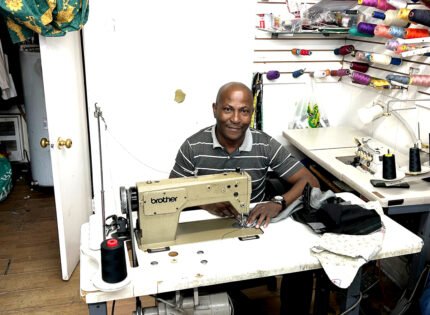Passed through the magnificent Panama Canal, now all roads lead to….
80 to 90 per cent of the country’s emeralds and silver come from this area
Many would say that the destinations we visit on our cruises are like works of art. Certainly the charms of the Panama Canal and Central/South America offer something to satisfy anyone’s sense of aesthetics. As the Coral Princess makes its way across the cool, calm Caribbean Sea one cannot help but reflect on the wonder of the Panama Canal with its majestic locks and serene beauty where so many of our fore-parents toiled, lived and died. It was quite an experience.
that the destinations we visit on our cruises are like works of art. Certainly the charms of the Panama Canal and Central/South America offer something to satisfy anyone’s sense of aesthetics. As the Coral Princess makes its way across the cool, calm Caribbean Sea one cannot help but reflect on the wonder of the Panama Canal with its majestic locks and serene beauty where so many of our fore-parents toiled, lived and died. It was quite an experience.
Now it is early morning as the Princess makes it approach to the Cartagena pilot station where they will take on the local pilot who will guide this big ship through the Bocachica Channel where we will proceed north towards our designated berth in the lovely city of Cartagena – Columbia.
First thing one notices as we disembark the ship is the size of the tour buses lined up to take us on the various tours, they were all new but small in comparison to other places that we have visited. They had all the conveniences one would expect such as air conditioning, but there was grumbling from the two ladies that have been touring along with us from the beginning of the cruise. They were concerned about the size of their hats blocking other people’s view until it was suggested by this quiet, unassuming lady sitting behind them that they could take off their hats as they would not be needing them on the bus.
They both said in unison “Oh my that’s right” as they removed the hats. Snickering, under their breath was heard by the rest of the group, Ah! Those ladies we could always count on them for some diversion, but that’s cruising… you meet all types.
As the buses move out of the port we realize why the coaches were so small – the streets are extremely narrow, with inches to spare as the driver maneuvered very skillfully through the towns.
One notice immediately on approaching the horseshoe shaped harbor the huge statue of the Virgin Mary. As you get a panoramic view you can’t help but notice in the background the very high buildings 20 to 25 stories tall. This is so far is the busiest and richest port we have seen, one cannot help but think – drugs. After all this is the land of the drug cartels, but how wrong can one be, as our guide would later explain: Do not judge us by what you have been reading. Columbia supplies 80% to 90% of emeralds and silver to the world, most of it coming from this area.
Our guide mentioned in his welcome introduction quote: “ I know what you are all thinking, Columbia equals drugs and guns,” not lying, that’s exactly what I was thinking. He reassured us not to worry we are in the safest area of Columbia and because of the high employment in this region the cartel stays away. He drew to our attention as we drove around on every street corner there was a cop and true to his words there they were, felt real safe.
But I am jumping ahead of myself, Cartagena founded by the Spanish explorer Madrileno Don Pedro de Heredia in 1533. It is located in the northwestern area of South America, and sits on the northern coast of Columbia sharing its borders with Venezuela, Brazil, Ecuador, Peru and Panama.
Because it is situated so close to the equator, Columbia does not have any seasons and maintains an average temperature 82F degrees with a slight wind that makes it easy to breathe. A little bit more on this beautiful, ancient but at the same time modern city, like many successful Spanish ports Cartagena was a target for the French and English pirates.
The most notorious to venture into this beautiful bay was the Englishman Sir Francis Drake who attacked the city and demanded a ransom of 107, 000 Spanish Eight Reales which in today’s dollars is approximately $200 million US. After several more raids and looting by the French and English, Spain decided to pour all its resources into constructing a gigantic fortress, which made Cartagena an impregnable stronghold, which today is declared an UNESCO world heritage site.
It is a very imposing and majestic. One can walk up to the very top of the structure and view for miles around. To let you know yours truly hiked to the very top unlike some people Ann included.
Our driver was very informative, he took us through a street where there were 300year old trees, you may say what is so remarkable about that, well the bottom of the trunk of those trees looked exactly like elephant legs, the toes and even the wrinkles that elephant legs have. There were not just one or two trees but the entire block tree after tree had the same characteristics, very freaky.
As we made our way to the San Felipe Fortress one does not feel the history of the place that has four distinct spoken dialects as there are far too many modern cars and buildings even as we stopped to enter one of the beautiful homes that had three courtyards. Most Spanish homes had just one courtyard. The first courtyard was for the owner, the second for the slaves and the third for the plantation. This is a town that grew rapidly and supported a middle class society as a shipping center for gold, silver and the movement of slaves between the Americas and Spain.
We continued our tour and made our way to the Palacio de la Inquisition. If you have a weak stomach this place is not for you. Looking at the building it seems like a charming multi-storied structure, but behind the ornate stone gateway is a history of misery and torture. During the colonial era and Spanish inquisition about 800 people were condemned to death and were executed for crimes of which the Church decreed were “Magic” witchcraft and blasphemy.
The museum displays instruments of extreme torture, such as the stretching rack with ropes that attach to the scrotum, neck, ankles and arms, and many more inhuman ways of causing pain, suffering and eventually death. The one that stood out in my mind is a metal circle that is placed and tied around the head and neck area with a blade affixed right under the throat, this means that you could not ever fall asleep or you would kill yourself.
This was simply draining for me that at this point I just wanted to head back to the ship and have a few beers to settle my brains but we had one more stop.
The San Pedro Cathedral and Sanctuary, built in 1716. He was the first monk in the new world to be canonized. His remains are enclosed in a glass crypt that forms part of the altar. This reflects the devotion held by the people of Cartagena as they stream in to say their prayers. As we made our
exit we were led into a hall where we were serenaded by a local cultural group in all their brightly colored dresses as they sang and danced to music of their country. This was a fitting end to a tour that took us through torture chambers. I needed that. As we boarded our coaches I am reflecting, was it worth seeing those torture chambers? Yes, indeed it was, I said to myself, not much has changed since that time man is still inflicting pain on each other perhaps in different ways.
It is a city that I plan on revisiting in the near future, 3 hours is not sufficient to see this historic and beautiful city, but now that I am at the bar on the ship with my Peruvian bar tender and a cold lager beer things never looked better, so until we venture to Aruba which will be our last major stop… Walk good!!!!
















